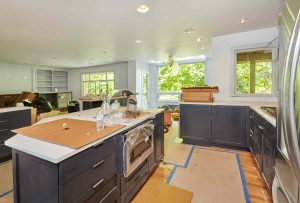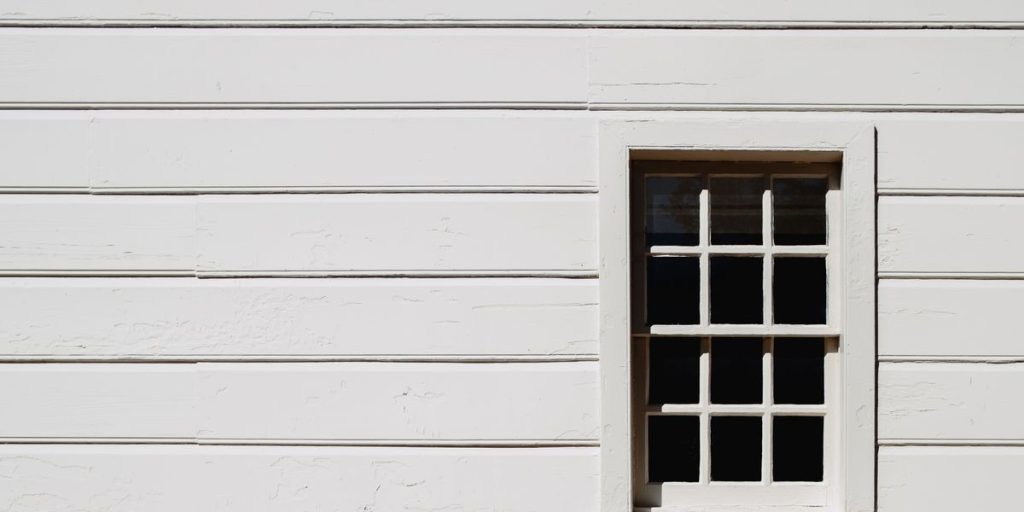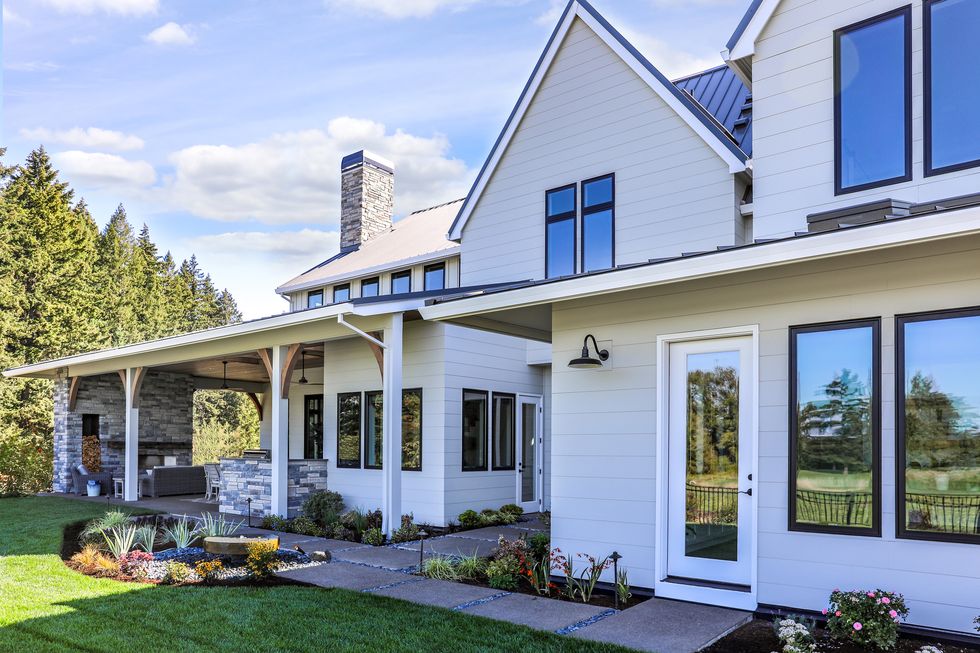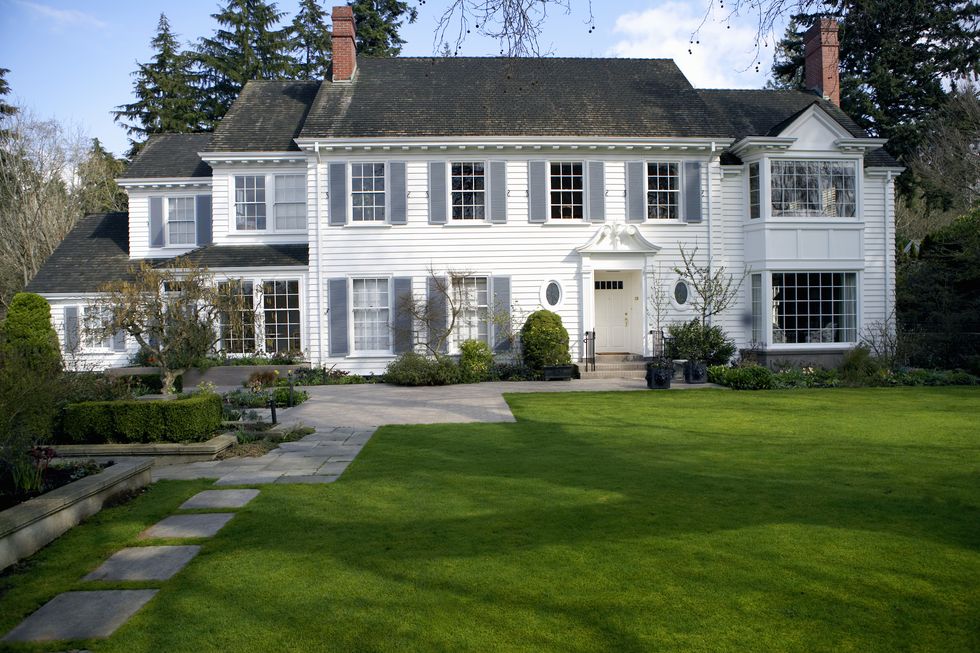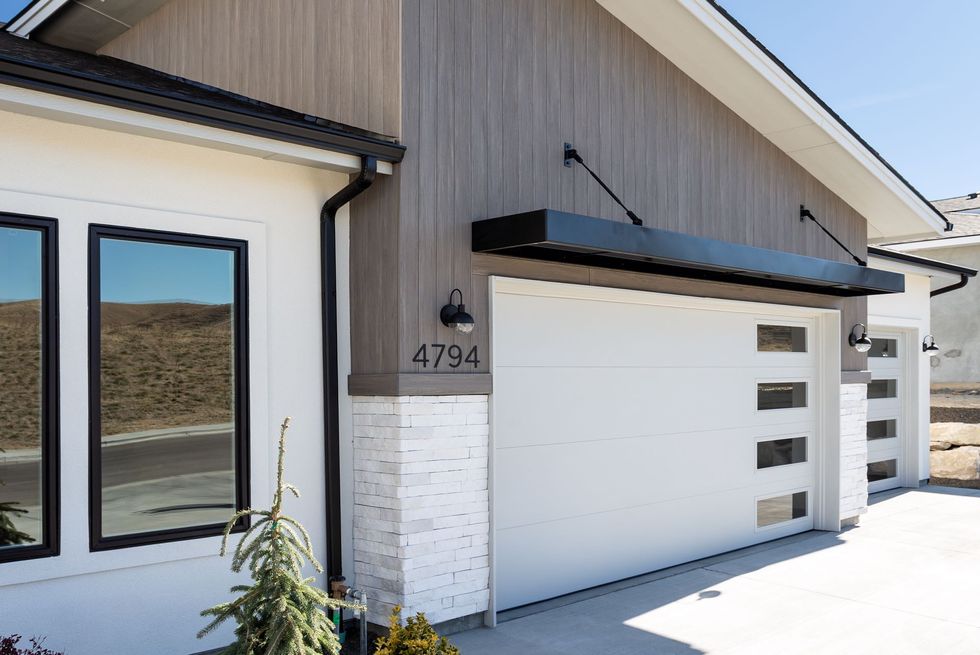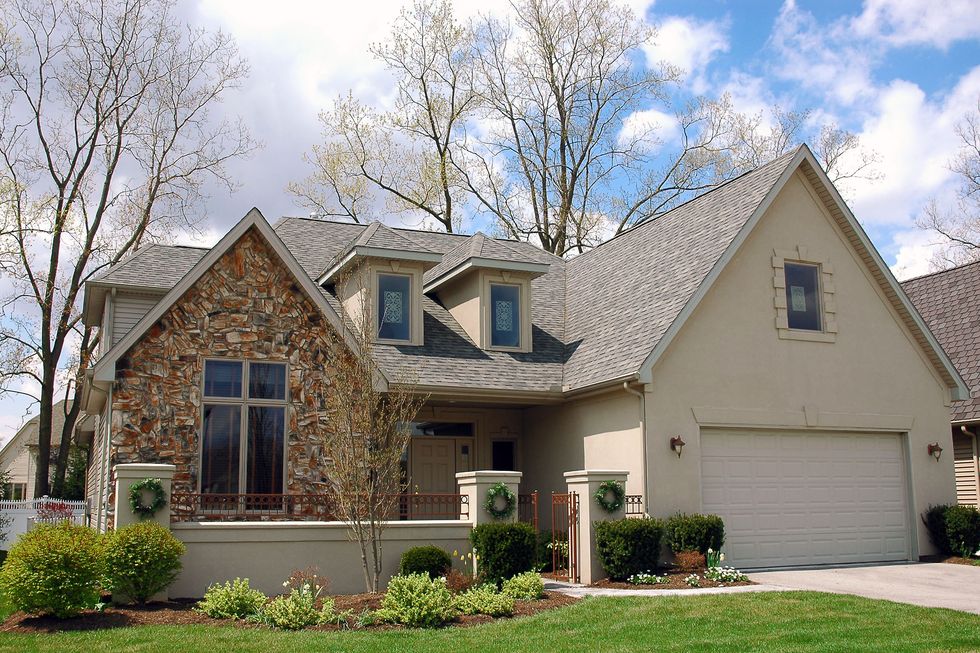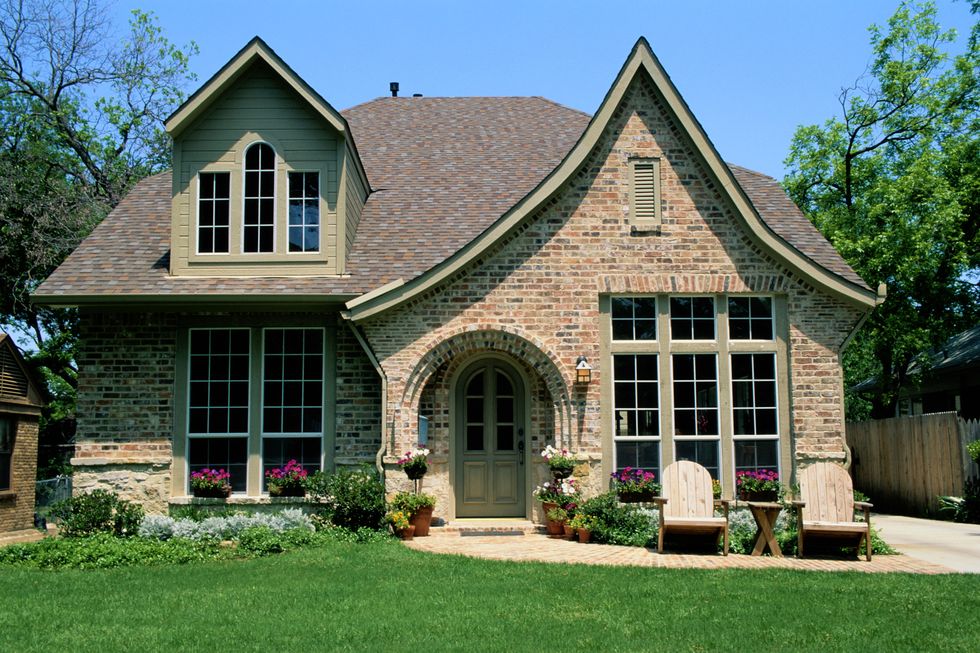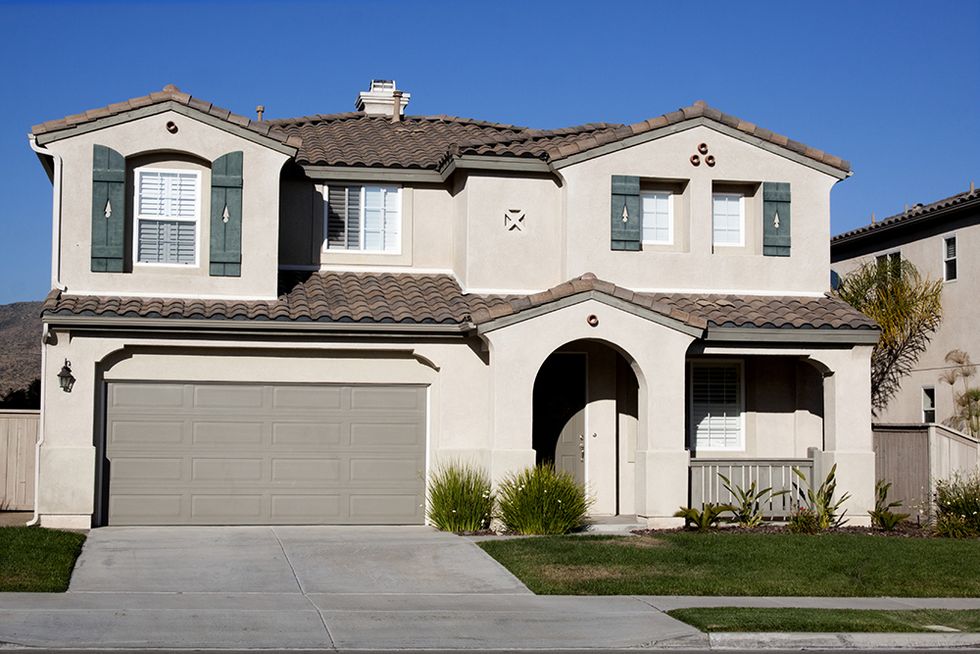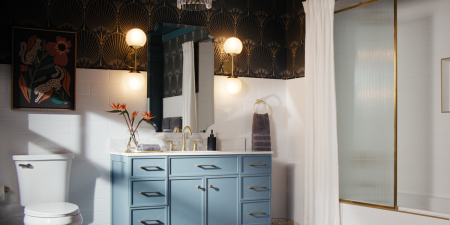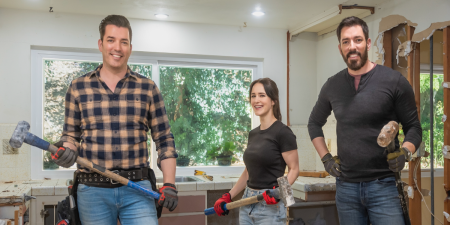When it comes to curb appeal, no exterior element has greater impact than your home’s siding. It’s also one of the first lines of defense against the elements, from pounding hail to lashing rain to blazing heat. No wonder siding replacements have one of the highest returns on investment of all home improvement projects, according to Remodeling Magazine’s latest Cost vs. Value Report.
“Home re-siding is one of the most common jobs we take on,” said Randy Miller, owner of Allrite Home & Remodeling in Milwaukee, WI. and past president of the National Association of the Remodeling Industry’s Milwaukee chapter. “Even if the siding is in decent shape, after 25 or 30 years, a lot of homeowners are ready to refresh the look and bring it up to date.”
The average cost of re-siding is around $11,500, according to ANGI, the home services marketplace, so taking on this project for your home is a major investment. That means you definitely want to get it right the first time. Though most homeowners hire the work out, it pays to have a firm handle on the options before you start interviewing contractors.
With that, the experts from the Home Improvement and Outdoor Lab at the Good Housekeeping Institute pulled together this primer on the seven best types of siding for a house. Choose wisely and you just might end up with the prettiest home on the block.
Vinyl siding
Pros
- Competitive price
- Minimal upkeep
- Lightweight design makes for easy installation
Cons
- Cheaper versions can crack, warp and melt
- Despite design improvements, it still can’t match the beauty of real wood
Cost
- $3 to $12 per square foot, or $3,000 to $30,000
Over the last 50 years, vinyl has been the most common siding material in the U.S., based on data from the American Housing Survey, conducted by the U.S. Census Bureau. Credit the material’s low cost, lightweight design which makes for easy installation and minimal maintenance, including the fact that it doesn’t need to be painted. Though vinyl’s use in new construction peaked around the turn of this century, it’s still used on about a quarter of new homes, and it remains a popular choice with remodelers.
While first-generation vinyl was often cheap looking, both the aesthetics and performance of the material have improved dramatically, especially over the last decade. “The old, hollow-backed panels with a 4-inch lap have been replaced with 6-inch-wide insulated panels that closely resemble wood siding, without any of the oil canning,” said Miller, referring to the waves and ripples that that are a telltale sign of inferior vinyl siding.
A good example of this next-generation vinyl is Certainteed CERTAplank Single 7′ Reinforced Siding (pictured), which took home a Good Housekeeping Home Reno Award. The reinforced siding withstood our tough impact tests and also fended off stains and scratches. Our design experts applauded the “beautiful and timeless color options.”
Still, even the best vinyl siding on today’s market won’t be mistaken for real wood from close range. Plus, though the upkeep is minimal, when vinyl reaches its end of life after several decades, it will need to be replaced, whereas well-maintained natural materials, like wood and stone, can last for centuries. Cheaply made vinyl siding may also be more prone to crack, warp or melt.
Fiber cement siding
Pros
- Protects against extreme weather, fire, termites and more
- Available in a range of styles to suit every architecture
- Easy to maintain
Cons
- Hardness and heft make for a more challenging installation
- Relatively expensive
Cost
- $5 to $14 per square foot, or $5,000 and $35,000
Made from a blend of cement, sand and cellulose, fiber cement siding has been around for more than four decades. Its popularity has grown steadily in that time, especially in the West, where more than a third of new homes are now clad in fiber cement. Part of its appeal in wildfire-prone parts of the country is the material’s resistance to fire (some insurance providers offer discounts for homes with fiber cement siding). The material also does an excellent job fending off extreme weather, wind, moisture and pests, plus it’s easy to maintain.
In addition to its many performance benefits, fiber cement comes in an array of alluring styles, starting with traditional lap siding that is hard to distinguish from real wood, especially with a factory-applied paint finish. The material can also be fashioned into architectural panels well-suited to contemporary homes or board-and-batten siding, ideal for the popular farmhouse look.
A couple drawbacks to keep in mind: Fiber cement is one of the more expensive siding materials and it’s quite heavy, which makes it harder to install than other siding products.
If you’re interested in fiber cement, you’ll no doubt come across James Hardie, which invented the material and is still the clear market leader. The company is also a GH Seal holder, so its Hardie line of products have been tested by our experts to meet the highest standards of durability and performance. Its expanded Hardie Architectural Collection (pictured) also won a GH Home Reno Award, in part because of its range of contemporary and traditional siding styles.
Wood siding
Pros
- Unparalleled warmth and beauty
- Very durable
Cons
- Requires periodic refinishing
- Vulnerable to fire and pests
Cost
- $1 to $15 per square foot, or $1,000 to $37,500
Though less than 5% of new homes have wood siding, it was once the dominant material, especially throughout the Northeast and Midwest. It’s still the nostalgic favorite with many homeowners who stand by the natural warmth and beauty of wood siding, whether it’s cedar shingles or clapboards milled from pine, oak or spruce trees.
The old-word charm of wood siding is matched by its durability, though Miller lamented that today’s trees are not quite as hardy as the old-growth species that used to produce the earliest wood siding. Be that as it may, most wood siding will do a solid job of keeping out the weather and it can take its hits without cracking or denting, whether from pounding hail or an errant baseball.
Wood siding’s biggest vulnerability are fire and pests, including termites, carpenter ants and woodpeckers. And, of course, it needs to be diligently maintained, with a fresh coat of paint or stain every 10 to 15 years, depending on the harshness of the local climate.
Composite siding
Pros
- Resembles wood, without the upkeep
- Protects against weather, fire and pests
Cons
- Lacks the authenticity of natural wood or stone
Cost
- $1 to $6 per square foot, or $1,000 to $15,000
This newer siding category includes several synthetic products made from materials like wood fiber, plastic and PVC. “Composite siding is another way to get the look of real wood without all the maintenance,” said Miller. Purists may balk at the synthetic formula, but there’s no debating the value of these engineered products.
Though composites vary based on their ingredients, they are all extremely durable and resist weather and pests. They can also be fashioned into any shape or size, from shake siding that closely resemble cedar to traditional lap siding. Most varieties can be painted or stained any color, or you can choose from factory-applied finishes.
One of the highest performing siding materials to pass through the Home Improvement and Outdoor Lab for testing is TimberTech’s Cladding (pictured), an advanced PVC product that delivered superb dent and scratch resistance in our tests. We also like that it’s made in the USA from approximately 60% recycled materials, including plastic bottles and construction scrap.
Stone veneer siding
Pros
- Easier to install than real stone
- Puts less strain on the structure of the house
Cons
- Prone to water leaks
- Tends to have an artificial look
Cost
- $5 to $11 per square foot, or $5,000 and $27,500
Another cement-based siding product, stone veneers are made to look like brick, natural stone or other masonry material. They can be installed piece-by-piece, like the natural materials they mimic, or as part of a panel system. “Because they’re thinner than the real thing, veneers go up a lot easier than full stone or brick, which helps keep the project cost down,” said Miller. That also means that they put less strain on the structure of the house.
The disadvantage of stone veneers is they’re not as durable as actual stone, plus they are prone to water penetration, unless the installation is perfect. And despite improvements in manufacturing processes, including better pigments and molds, the faux stone has a hard time passing for the real thing. That’s due in part to the pattern repeats that occur with any mass-produced product, but also because it’s often applied in ways that natural stone wouldn’t be, for example, as an accent wall on the front of the house.
Brick siding
Pros
- Extremely durable
- Sustainably produced
- Classic beauty
Cons
- Vulnerable to moisture
- Difficult to install
Cost
- $10 to $20 per square foot, or $10,000 to $75,000
Brick is another timeless material that’s been used for centuries to clad traditional-style homes, from stately Colonials to charming Tudors. About 20% of new homes feature brick siding, proof of its staying power. The clay-fired bricks are a sustainable building material, plus they come in various sizes and textures for design versatility.
Performance-wise, brick is extremely durable (remember The Three Little Pigs…), but its porous structure makes it vulnerable to moisture, which is why you see it most often in dryer parts of the country. If you’re thinking about brick for your home, keep in mind that the material is on the pricey side, and the installation is labor-intensive, making it one of the most expensive siding materials. But provided the job is done right, it will be the last time you ever have to re-side the house.
Stucco siding
Pros
- Extremely durable, especially in dry, hot climates
- Strong insulating qualities
Cons
- Costly to install and repair
- Not the best moisture barrier
Cost
- $7 to $9 per square foot, or $8,000 to $11,100
Given the uptick in home building in the Sun Belt over the last 10 years, stucco is now the most common siding material used in new construction. Made from a mixture of Portland cement, lime, sand and water, stucco is a thin finish that’s typically applied in multiple coats to a home’s exterior. It also comes in prefabricated panels that are fastened to the sub-structure, easing installation.
Stucco is a durable material that does particularly well in dry climates, where it resists fire and heat. Little maintenance is required and it’s a fairly good source of insulation, providing both energy savings and sound reduction.
The trouble with stucco is it’s a pain to repair if chips or cracks do occur and it’s not great at fending off moisture, hence why it’s almost non-existent in northern regions.
What to look for when choosing the best siding for your house
Many homeowners choose to replace their siding with the same material. But given the range of materials available today, including many that deliver the same look but with better performance and less upkeep, it’s a good idea to consider all the options. Here’s what to think about.
✔️ Cost: Depending on the size of your house, you might be able to spend as little as $1,000 on the project or upwards of $30,000. With large houses, prices go up accordingly. Keep in mind that contractors charge more for homes with two or three stories since they’ll need to bring in extra ladders and scaffolding. And if your home has a lot of complicated shapes, like turrets and dormers, that will drive up the project cost even further.
✔️ Style: Switching up the type of siding on your house can have a dramatic effect. Just make sure it’s not eye-catching for the wrong reason by choosing a design-inappropriate material. Applying stone veneer to a contemporary-style home probably won’t look right, for example. Likewise, stay away from modern-looking panels on classical-style homes.
✔️ Weather: Most siding materials perform better under some climate conditions than others. Stucco, for example, is impervious to the hot sun, but it’s not built for wet conditions. Vinyl can become brittle in extremely cold conditions, especially if it’s not backed with insulation. If wildfires are a concern, fiber cement or stone is a better option than wood. Before making a final decision on your siding choice, think about the worst-case scenarios that the material might have to withstand.
✔️ Maintenance: This effects the long-term cost and performance of siding. Wood is one of the most beautiful materials, but it will need to be refinished (painted or stained) every 10 years or so. Low-maintenance materials like vinyl, composite, and fiber cement, just need to be washed down with a garden hose or a pressure washer (on a low setting).
What’s the best place to shop for siding?
Since siding replacements are usually done by professionals, most homeowners purchase materials through their contractor, who will get it directly from the manufacturer. But if you are tackling the job yourself, or you’re functioning as the general contractor on the project, you can order many mass-produced materials (vinyl, composite, veneer, etc.) through home centers like Home Depot and Lowe’s. Wood siding is sold at lumber yards and building supply stores. For natural stone and brick, visit the stone yard or a building supply store.
Why trust Good Housekeeping?
The Good Housekeeping Institute Home Improvement and Outdoor Lab provides expert reviews and advice on all things home-related, including siding and other building materials.
Dan DiClerico has covered the home improvement market for more than two decades. In that time, he has tested every major siding material — along with other exterior products like decks and roofing (he also swung a hammer on a roofing crew for many years before becoming a home expert). He has written countless how-to articles on the installation and maintenance of siding, working closely with professional installers to understand the latest techniques and innovations. DiClerico is a regular at trade shows and industry events, where he keeps up with the latest trends in the marketplace. In his role at the Good Housekeeping Institute, DiClerico oversees all siding testing, working closely with our team of engineers and product experts. He also manages any consumer surveys designed to capture homeowners’ experiences with various building materials.
Having written thousands of product reviews and how-to articles on all aspects of home ownership, from routine maintenance to major renovations, Dan (he/him) brings more than 20 years of industry experience to his role as the director of the Home Improvement & Outdoor Lab at the Good Housekeeping Institute. A one-time roofer and a serial remodeler, Dan can often be found keeping house at his restored Brooklyn brownstone, where he lives with his wife and kids.
Read the full article here
